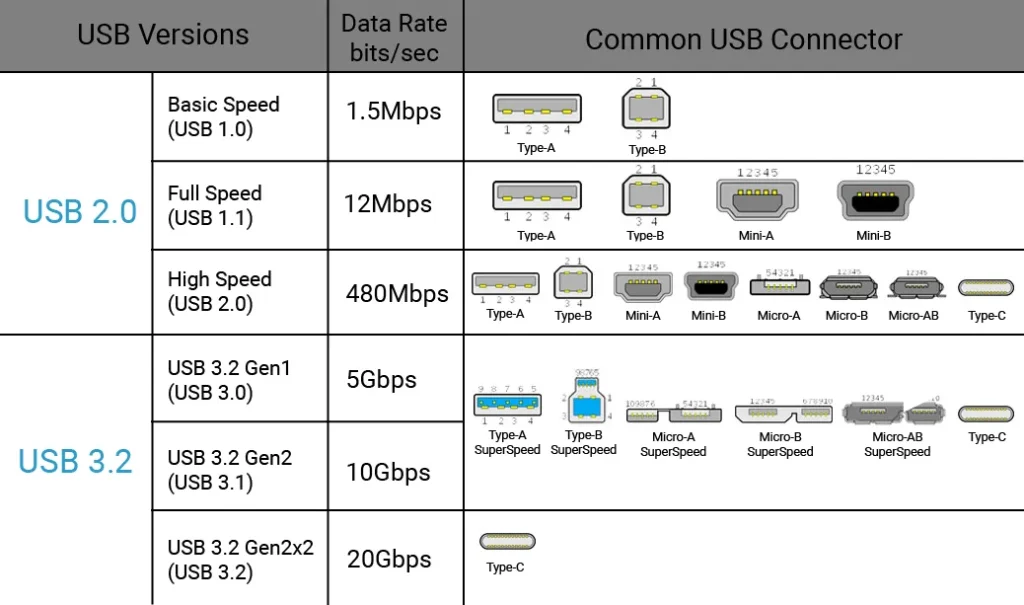What are the differences between USB 2.0 and USB 3.2?
Universal Serial Bus (USB) is a set of industry-standard specifications for cables, connectors, and protocols for connection, communication, and power supply. The two most common generations are USB 2.0 and USB 3.2.
USB 2.0
While USB 2.0 has some speed, power, and bandwidth limitations over USB 3.2, it is still a very useful option, especially for simple hardware applications. It is significantly less expensive than USB 3.2.
Speed: 480 Mbit/s
Physical Characteristics & Bandwidth: Four wires that can only handle one-way communication, either in or out, at any given time.
USB 3.2
USB 3.2 has essentially absorbed all the prior 3.x specifications. In general, the term “USB 3” refers to USB 3.2.
USB 3.2 is completely backward compatible, but when utilized in a USB 2.0 connection, data speeds and power utilization are limited to USB 2.0 levels. USB 2.0 is compatible with USB 3.2 ports, except for USB 3.2 type-B connectors which utilize a new design, but again only utilize USB 2.0 functionality.
Speed: 5.0 Gbit/s to 20 Gbit/s
Physical Characteristics and Bandwidth: Eight wires total that create two unidirectional paths that allow simultaneous in and out communication.

See the Whitepaper: “The Determining Factor for USB, CPU, and GPU Selection” for a more detailed examination of USB specifications.